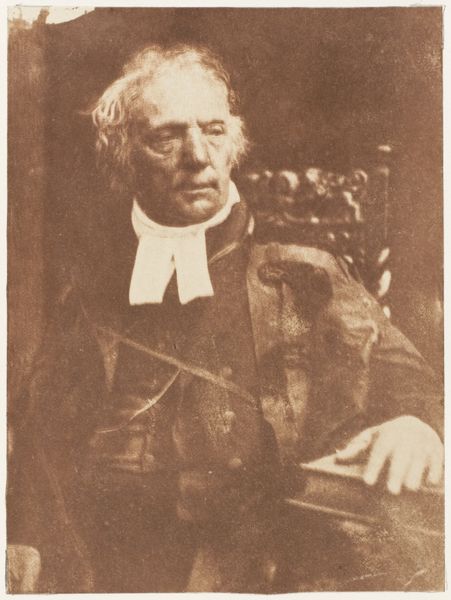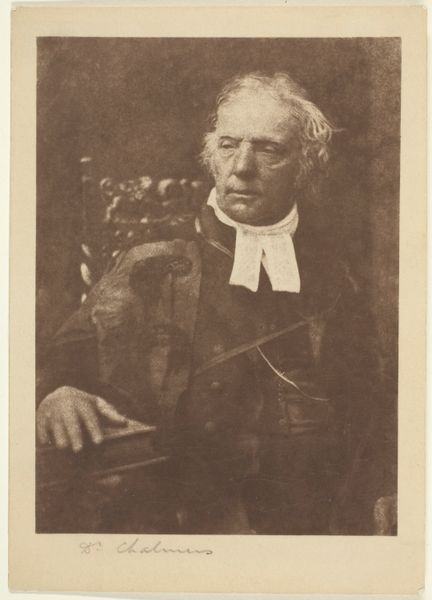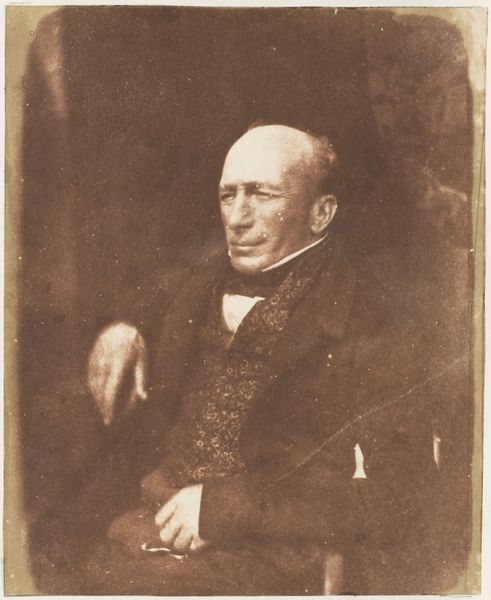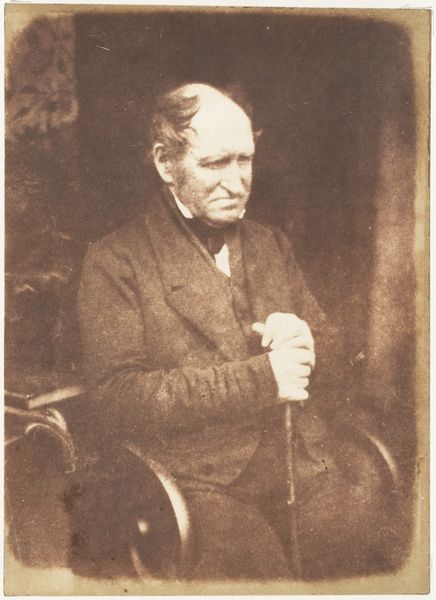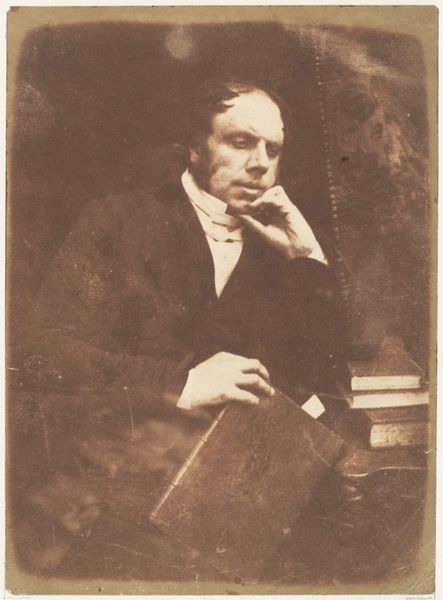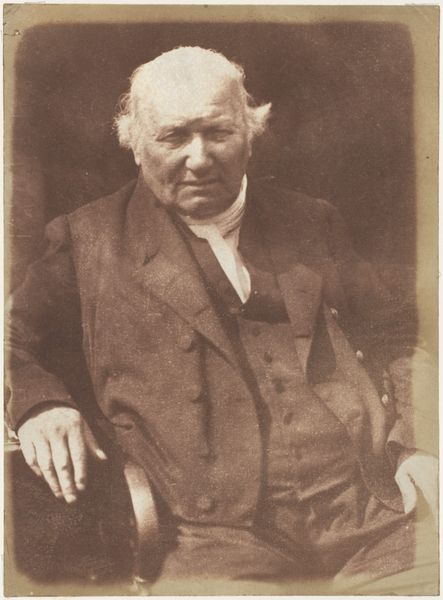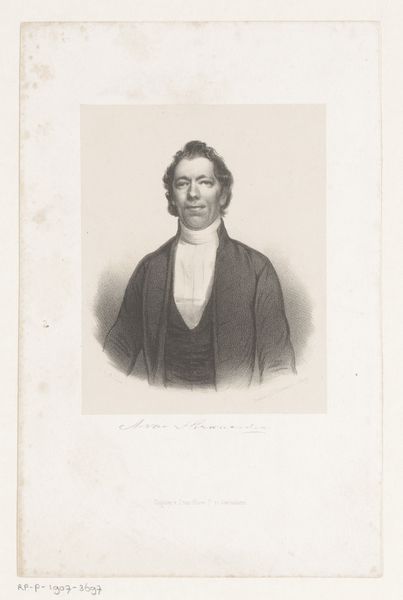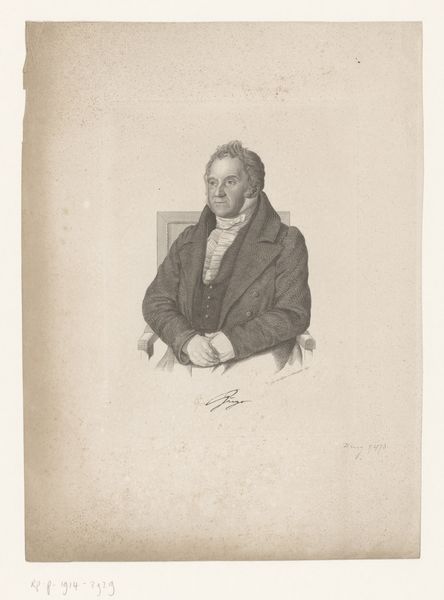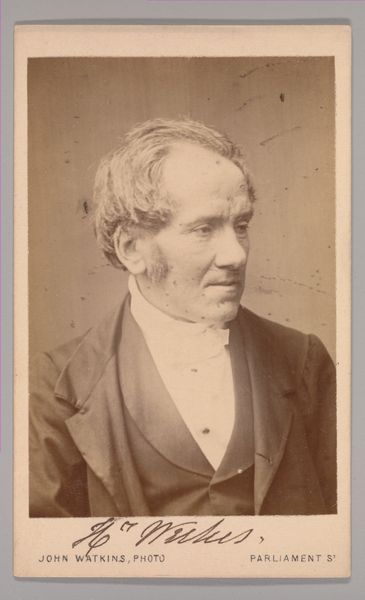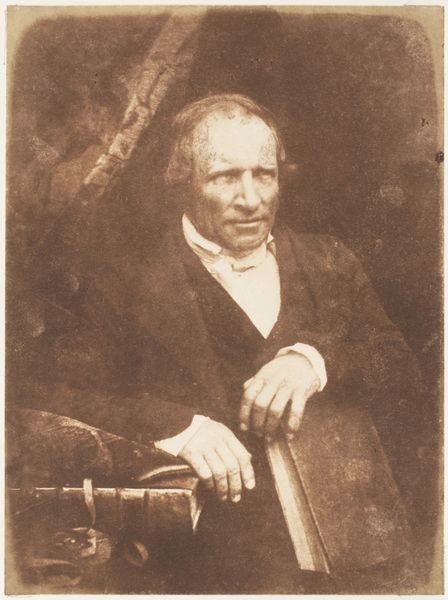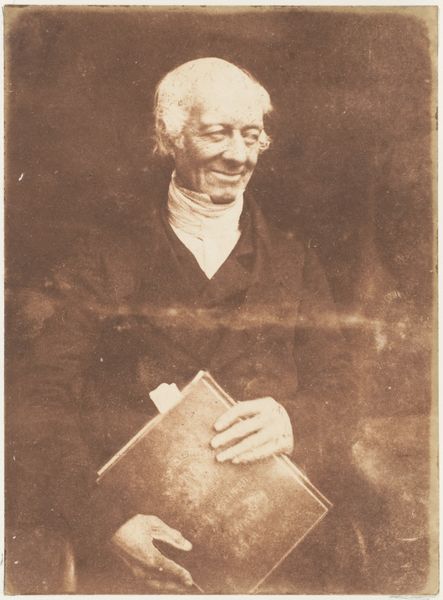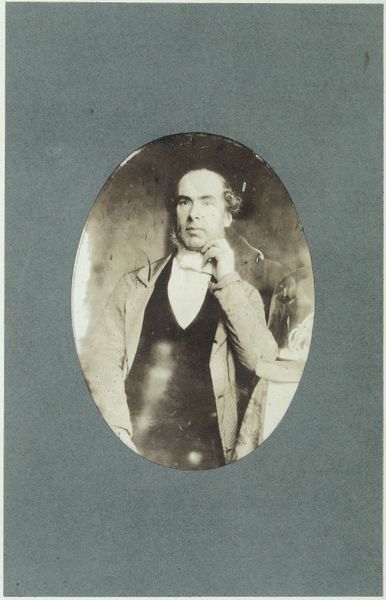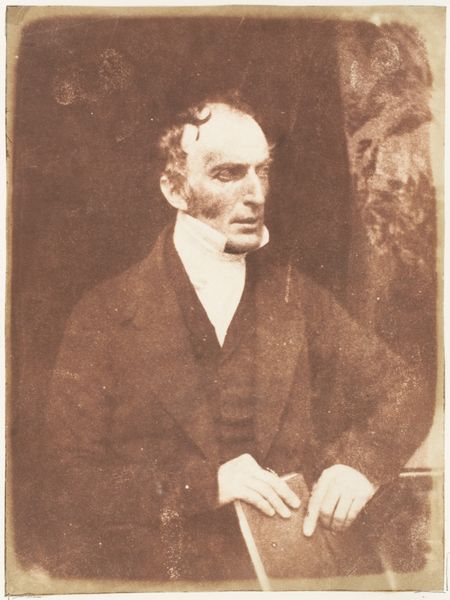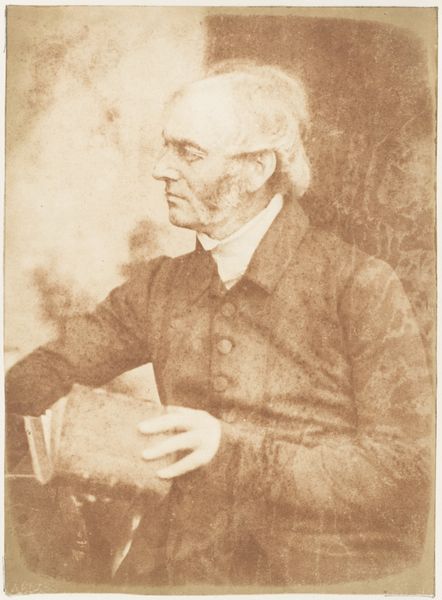
daguerreotype, photography
#
portrait
#
daguerreotype
#
photography
#
romanticism
#
men
Dimensions: 16.1 x 11.9 cm (6 5/16 x 4 11/16 in.)
Copyright: Public Domain
Editor: Here we have "Rev. Dr. Thomas Chalmers," a daguerreotype made by Hill and Adamson sometime between 1841 and 1845. The hazy sepia tones give the portrait a feeling of peering into a forgotten past. What captures your attention most when you look at it? Curator: It's truly remarkable to see such an early photograph, isn't it? For me, it's the sitter’s unwavering gaze that truly captivates. It’s more than just an image, it is like stepping into his world for an instance, imagine the stories etched on that face! The daguerreotype, with its own fragility and warmth, adds another layer of narrative, don’t you think? Almost as if time itself has softened the edges of his story. Editor: I hadn't thought of it like that, but I can definitely see how the medium itself contributes to that sense of a lived history. It's almost like a physical manifestation of time. How would someone in that period have reacted to such an image? Curator: Can you imagine the thrill of seeing oneself represented so directly? For the first time, mortality was mirrored back at you through light and chemistry! Beyond vanity, though, think of the political weight: To document individuals democratized image-making beyond painted elites. It makes you ponder about power structures that suddenly became inverted. Editor: It sounds like you’re saying this image wasn't just revolutionary for its artistry, but also for what it represented culturally? Curator: Precisely! It disrupted established systems. Think about the painted portraits of the time. Now ponder Hill and Adamson saying everyone’s likeness matters. Also notice the texture, which they used romantically. A daguerreotype can be visually cool and removed, but they’ve made him feel familiar! Editor: I’ve never considered the subversive elements of photography before. Looking closer, I understand now that it’s more than an artifact. Curator: Absolutely! These works can be our guides when thinking about our assumptions. We might reconsider what beauty, representation, and cultural legacy signify thanks to early photographers like Hill and Adamson!
Comments
No comments
Be the first to comment and join the conversation on the ultimate creative platform.
